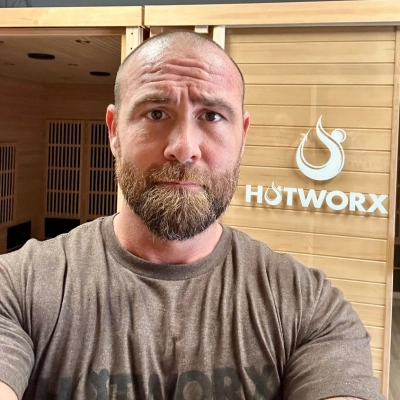7 Ways to Maintain Fitness Consistency During Challenging Times
Fitness professionals recommend maintaining movement consistency even during life's most challenging periods. This practical guide offers seven expert-backed strategies to keep your fitness routine intact when time and motivation are limited. From brief daily movement sessions to sustainable habit-building techniques, these approaches help preserve both physical and mental wellness without demanding major time commitments.
Fifteen Minutes of Daily Movement Maintains Momentum
There was a period when work was relentless and life felt like it was happening at full speed, and I honestly thought my fitness goals would fall by the wayside. What kept me consistent wasn't doing everything on my plan—it was defining a non-negotiable minimum. For me, that was just fifteen minutes of movement a day. Some days it was a short bodyweight circuit at home; other days, a brisk walk outside. It wasn't about intensity or duration; it was about showing up.
That small, achievable baseline kept the momentum alive. Even on the toughest days, knowing I could meet that minimum gave me a sense of control and continuity. Over time, those fifteen-minute sessions often became longer, more focused workouts, but the key was having that floor — a small promise to myself that no matter what, I wouldn't completely skip training. It made all the difference in staying consistent without burning out.

Morning Routine Creates Mental Clarity and Focus
During a particularly demanding growth phase at AIScreen, balancing fitness with 14-hour workdays felt impossible. To stay grounded, I made movement a daily non-negotiable—even if it meant just 20 minutes. My minimum was a quick, bodyweight routine before checking emails each morning. It wasn't about performance; it was about maintaining mental clarity and consistency.
Interestingly, I began using digital signage at home as subtle motivation—displaying rotating reminders, quotes, and progress visuals on a small screen near my desk. Seeing visual cues throughout the day helped anchor my commitment.
The biggest breakthrough came from treating fitness as part of my leadership routine, not a personal luxury. I noticed that on the days I trained, decision-making came easier and stress felt manageable. Maintaining that small, non-negotiable habit didn't just keep me fit—it preserved the focus and resilience I needed to lead through uncertainty.

Small Daily Walks Build Consistency Through CBT
During one of my toughest years, when work and personal stress collided, I used CBT to keep my fitness habits alive. Instead of setting ambitious goals, I practiced cognitive reframing: whenever I thought "I don't have time," I replaced it with "I'll feel more in control after ten minutes of movement."
My non-negotiable minimum was a 15-minute walk every day. That tiny ritual became proof that consistency isn't built on motivation, it's built on keeping promises to yourself, no matter how small.

Ten-Minute Core Lock Preserves Structural Foundation
Maintaining fitness during a particularly challenging life period is about defending the structural integrity of your routine from external chaos. The conflict is the trade-off: when stress hits, people often abandon their routine entirely, creating a massive structural failure in their physical foundation. You must trade the ambitious goal for the achievable minimum.
My non-negotiable minimum that kept momentum was the 10-Minute Structural Core Lock. This meant that no matter how late I worked or how drained I felt, I completed 10 minutes of intense, focused core and bracing exercises. This simple, hands-on routine was a sacrifice—it meant giving up the longer, satisfying weight-lifting session—but it secured the essential structural element of my physical foundation. It was small enough that the chaos couldn't defeat it.
This success proved that momentum is preserved not by chasing the ideal workout, but by executing the minimum required to maintain structural capacity. When the life stress subsided, the foundation was intact, making the return to full training simple and immediate. The best way to maintain consistency is to be a person who is committed to a simple, hands-on solution that prioritizes the non-negotiable maintenance of the structural minimum.
Brief Movement Windows Keep Psychological Rhythm Intact
During periods when life felt unpredictable, maintaining a ten-minute movement minimum proved essential. That brief window—whether for mobility drills, bodyweight circuits, or brisk walking—kept the routine psychologically intact. The focus shifted from performance to presence, removing the guilt that often derails progress after missed workouts. Caffeine played a quiet supporting role here: a small cup of Equipoise Coffee before training created a ritual cue, signaling both focus and transition. This pairing of habit and ritual maintained rhythm when structure elsewhere faltered. Over time, that minimal daily investment preserved muscle tone, stabilized energy, and safeguarded mental clarity. Momentum returned naturally once stability followed, proving that consistency depends less on duration and more on daily intention.

Start Small and Gradually Build Sustainable Habits
My fitness goals have evolved with my capabilities. When I started, my non-negotiable minimum was two 30-minute strength workouts per week—something simple and sustainable. Over time, as I saw progress, I gradually built up to a daily routine that now feels second nature.
Because my body and mind are used to this rhythm, even during challenging periods I find myself craving movement rather than forcing it. The key to lasting consistency is starting small, proving to yourself you can stick with it, and then raising the bar as it becomes part of who you are.

Quick Infrared Sessions Sustain Progress Despite Challenges
Opening my HOTWORX studio in 2025 while balancing a full-time job and a family definitely tested my consistency. But here's what kept me going:
My non-negotiable: Two 15-minute infrared HIIT sessions a week.
Why this worked:
Time-friendly: Even on my longest days, I could find 15 minutes.
Great results fast: The combination of infrared and HIIT gave me solid results in a short time.
Staying true to myself: I might not have been able to be a full-on athlete, but I stayed "the fitness person."
Walking the talk: I couldn't promote infrared fitness if I wasn't doing it myself.
The big shift for me? I stopped stressing over how tough my workouts were and just focused on staying consistent. Missing a session used to mess with me for days, but now, just two quick 15-minute sessions kept me moving. And when things slowed down, getting back into the groove felt easy.
Here's my advice: Make your minimum so simple it almost feels silly not to do it. It's not about pushing yourself hard every time—it's about showing up, even when life is crazy.



